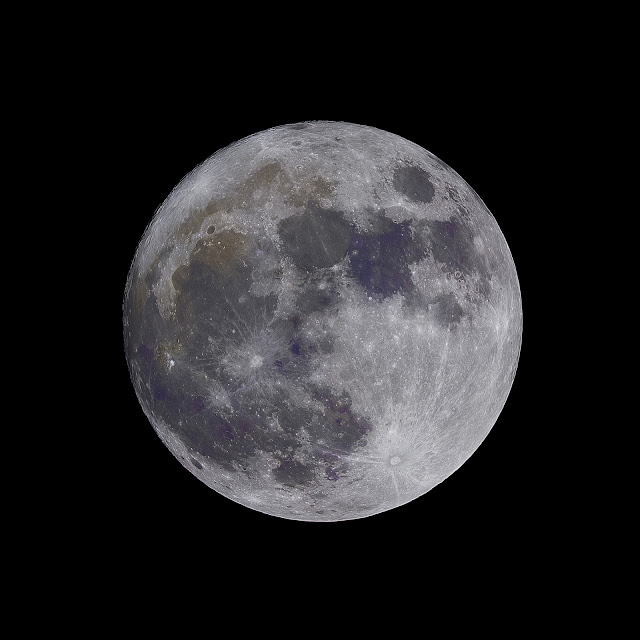Samsung responds to fake Moon controversy
Samsung has distributed an English-language blog entry making sense of the methods utilized by its telephones to photo the Moon. The post's substance isn't precisely new — it gives off an impression of being a softly altered interpretation of an article posted in Korean last year — and doesn't offer a lot of new detail on the cycle. But, since it's an authority interpretation, we can all the more intently examine its clarification of what Samsung's picture handling innovation is doing.
The clarification is a reaction to a viral Reddit post that displayed in unmistakable terms exactly how much additional detail Samsung's camera programming is adding to pictures while snapping a picture of what has all the earmarks of being the Moon. These reactions aren't new (Information distributed an extended piece about Samsung's moon photography in 2021) yet the effortlessness of the test brought the issue more noteworthy consideration: Reddit client ibreakphotos essentially snapped a photograph of a falsely obscured picture of the Moon utilizing a Samsung telephone, which included additional detail that didn't exist in the first. You can see the distinction for yourself beneath:
Samsung's blog entry today makes sense of that its "Scene Streamlining agent" include (which has upheld Moon photography since the System S21 series) joins a few methods to create better photographs of the Moon. In the first place, the organization's Super Goal highlight kicks in at zoom levels of 25x and higher, and utilizes multi-outline handling to join north of 10 pictures to lessen commotion and improve clearness. It likewise upgrades its openness so the Moon doesn't seem smothered in obscurity sky, and uses a "Zoom Lock" highlight that joins optical and computerized picture adjustment to lessen picture obscure.
As a matter of fact distinguishing the Moon in any case is finished with an "Artificial intelligence profound learning model" that has been "constructed in light of an assortment of moon shapes and subtleties, from full through to sickle moons, and depends on pictures taken from our view from the Earth."
In any case, the key stage, and the one that is created all the contention, gives off an impression of being the utilization of an under-made sense of "Simulated intelligence detail upgrade motor." This is the way Samsung's blog entry depicts the cycle:
"After Multi-outline Handling has occurred, System camera further saddles Scene Streamlining agent's profound learning-based artificial intelligence detail upgrade motor to actually wipe out leftover commotion and improve the picture subtleties considerably further."
Furthermore, here's Samsung's stream diagram of the cycle, which depicts the Detail Upgrade Motor as a convolution brain organization (a kind of AI model normally used to handle symbolism) that eventually contrasts the outcome and improved detail against a "Reference with high goal."
It is by all accounts this stage that is adding subtlety that was absent when the photograph was initially taken, and could make sense of why ibreakphotos' followup test — embedding a plain dark square onto a foggy photograph of the Moon — brought about the clear square being given a Moon-like surface by Samsung's camera programming.
While this new blog entry offers more subtleties in English contrasted with what Samsung has expressed openly previously, it's probably not going to fulfill the people who see any product fit for creating a sensible picture of the Moon from a hazy photograph as basically faking the entire thing. Also, when these computer based intelligence fueled capacities are utilized to publicize telephones, Samsung takes a chance with deluding clients about what the zoom elements of its telephones are able to do.
has been accomplishing for quite a long time to get progressively fresh and energetic photos out of moderately little picture sensors. "Many years, cell phone cameras go above and beyond, attempting to make more brilliant conjectures about the scene you're capturing and the way in which you maintain that it should look," Allison composed. "These things all occur behind the scenes, and for the most part, we like them."
Samsung's blog entry closes with a telling line: "Samsung keeps on further developing Scene Enhancer to decrease any potential disarray that might happen between the demonstration of snapping a photo of the genuine moon and a picture of the moon." (Our accentuation.)
On one level, Samsung is basically saying: "We would rather not get tricked by any more imaginative Redditors who take pictures of pictures of the Moon that our camera believes is the actual Moon." Yet on another the organization is additionally featuring exactly how much computational work goes into creating these photos, and will proceed to in future. At any rate, at the end of the day, we're left posing a similar inquiry: "what is a photo?"


